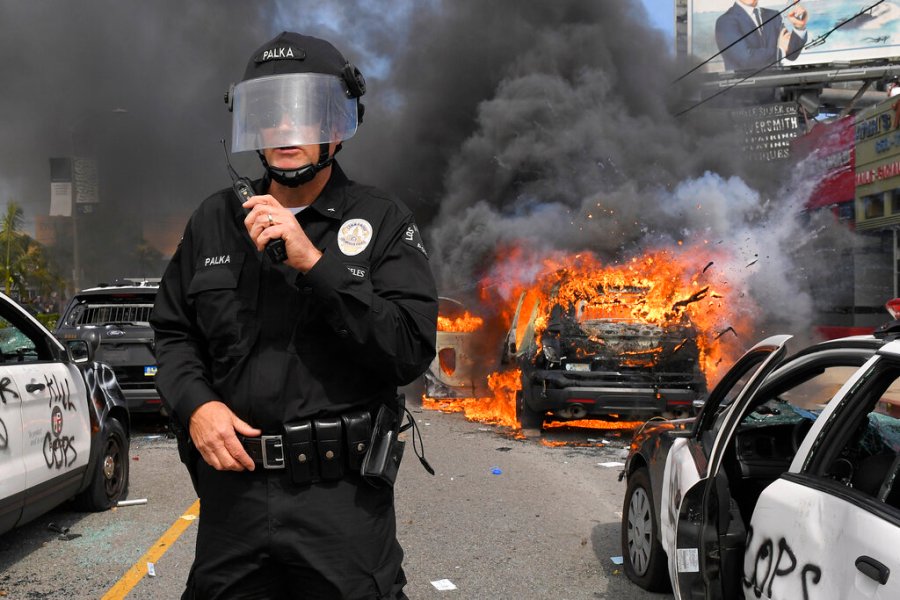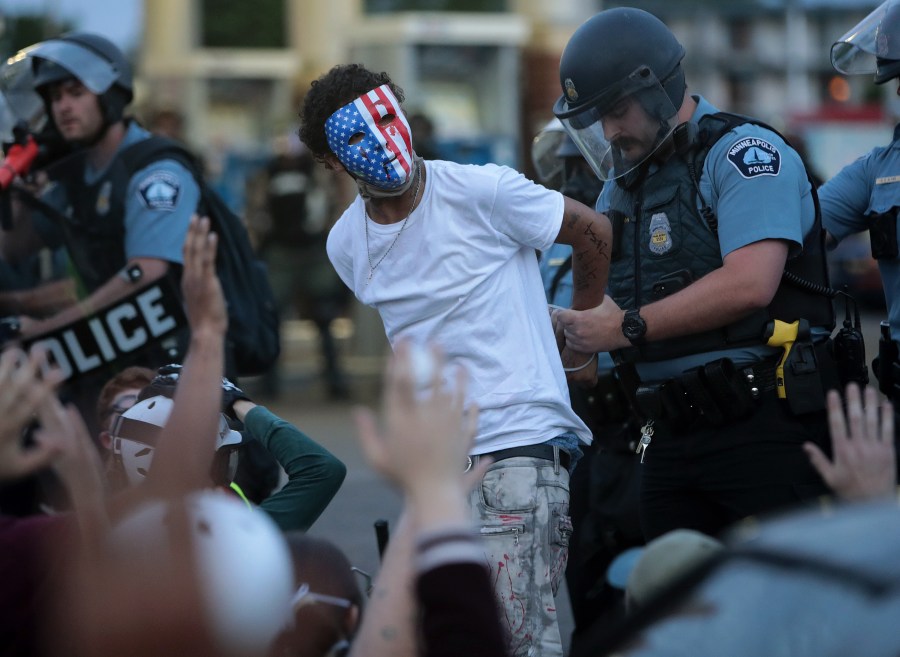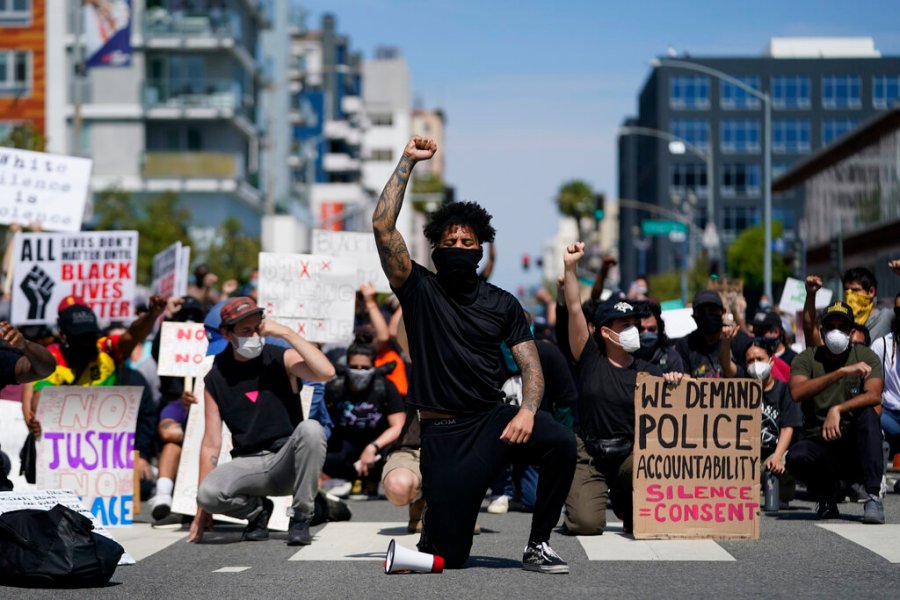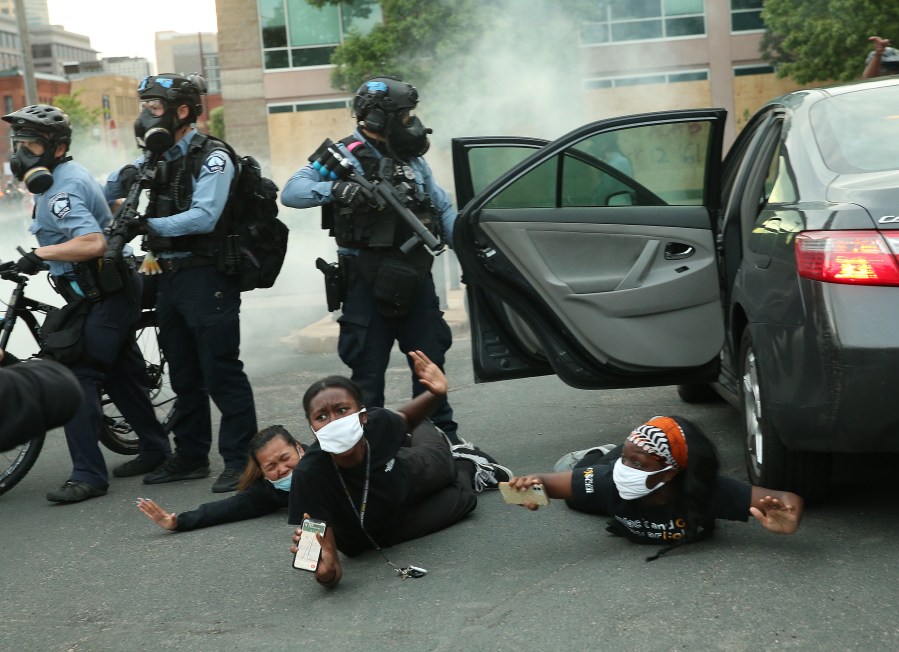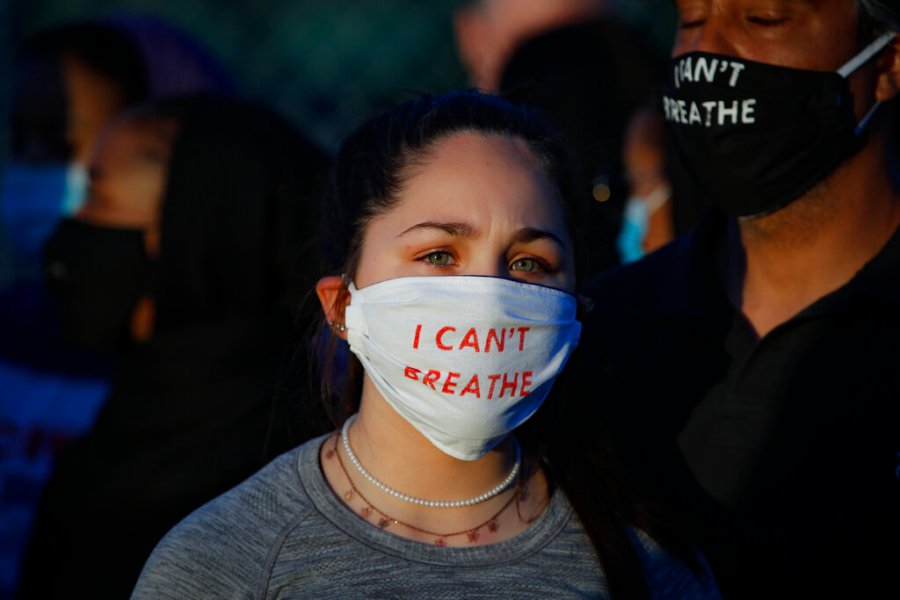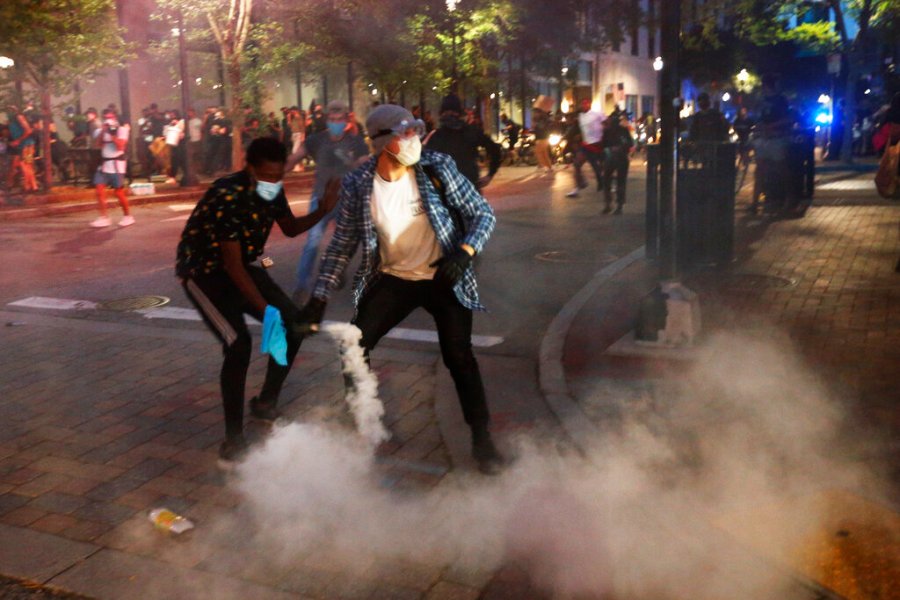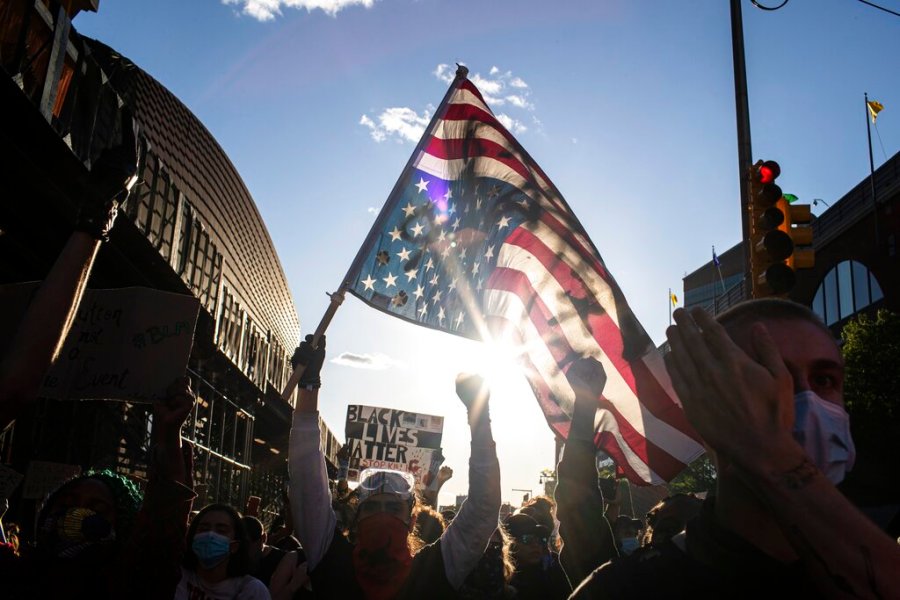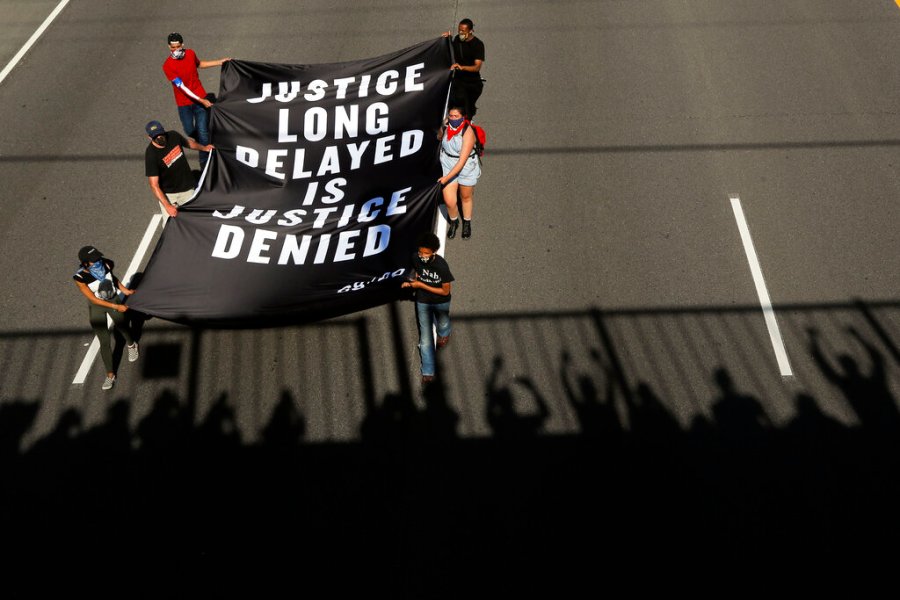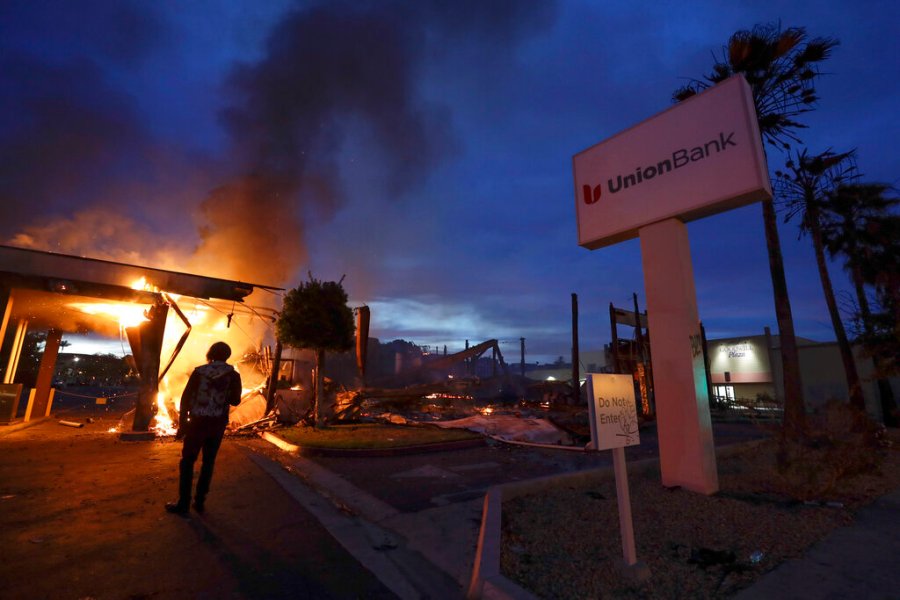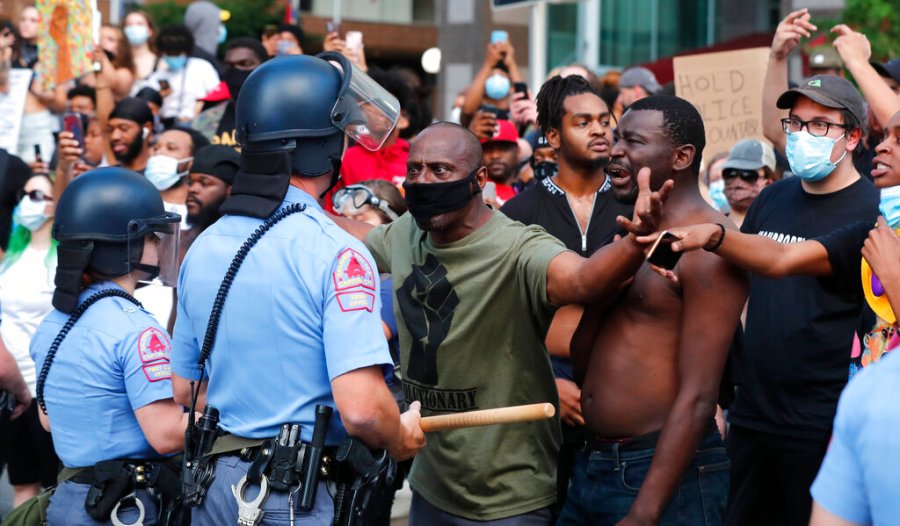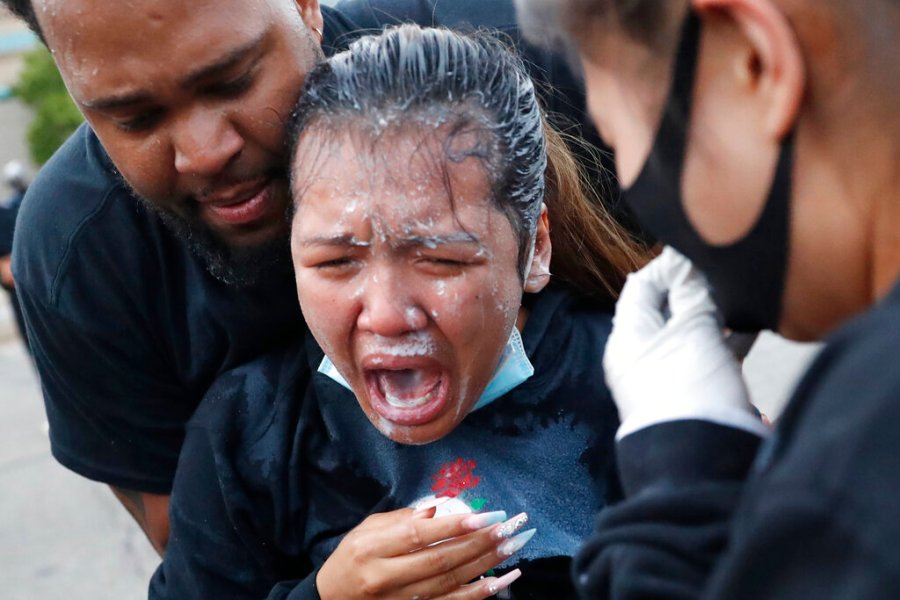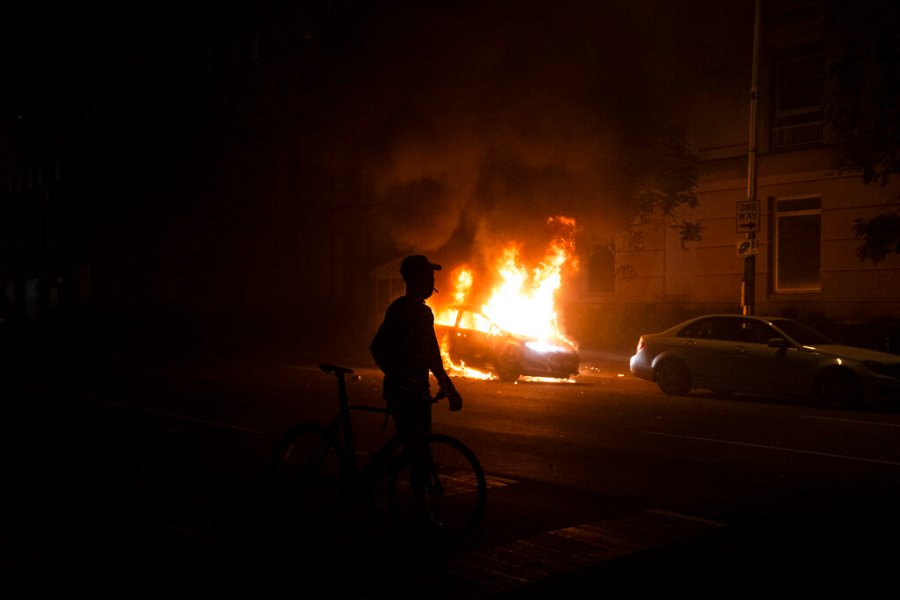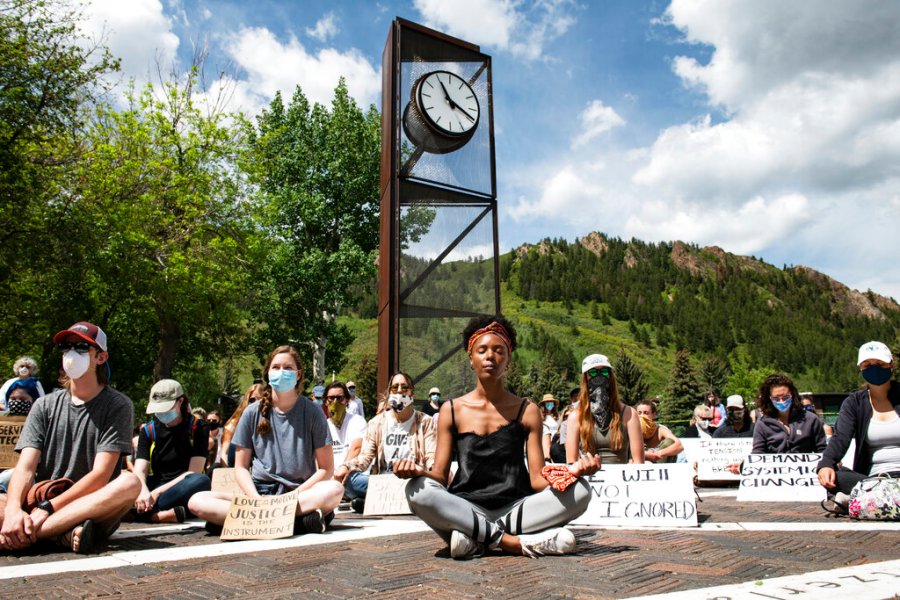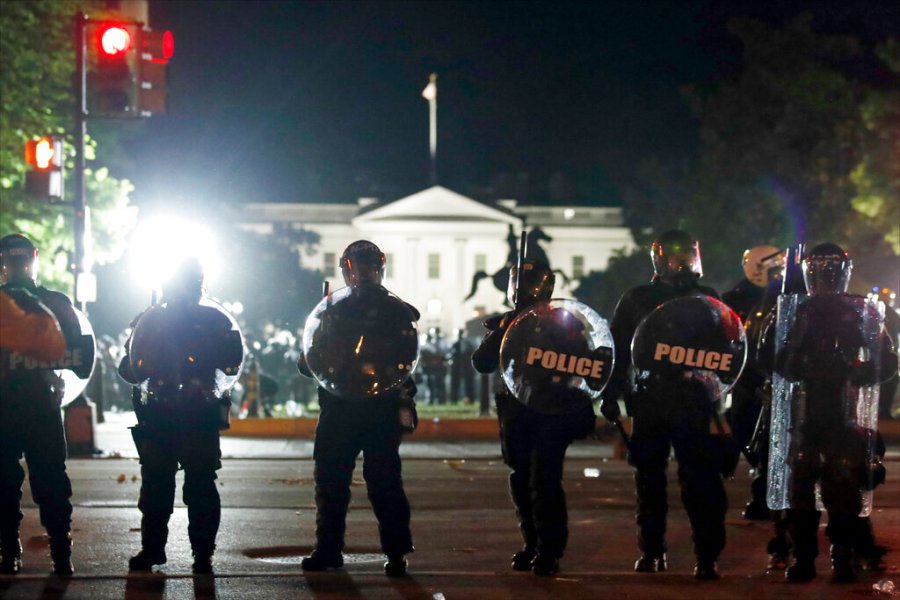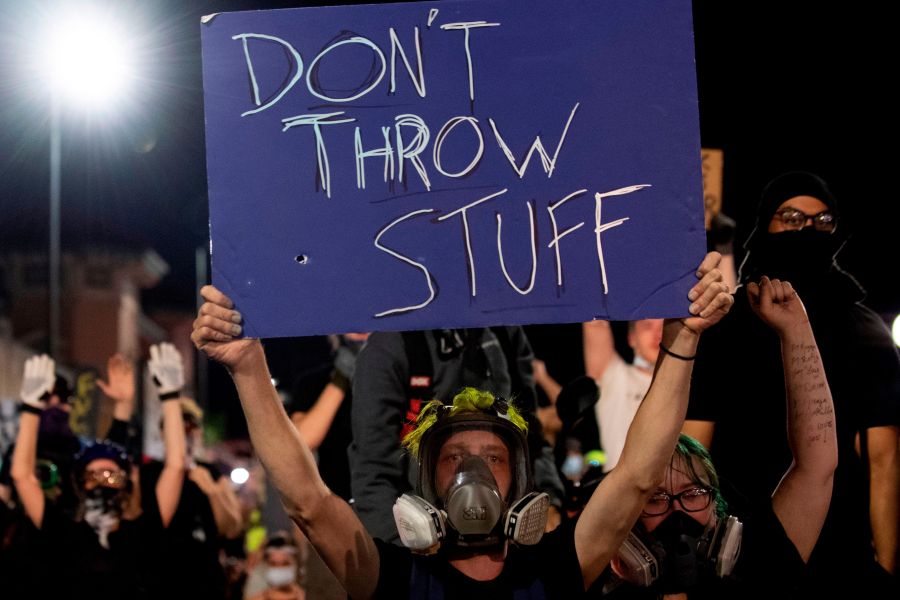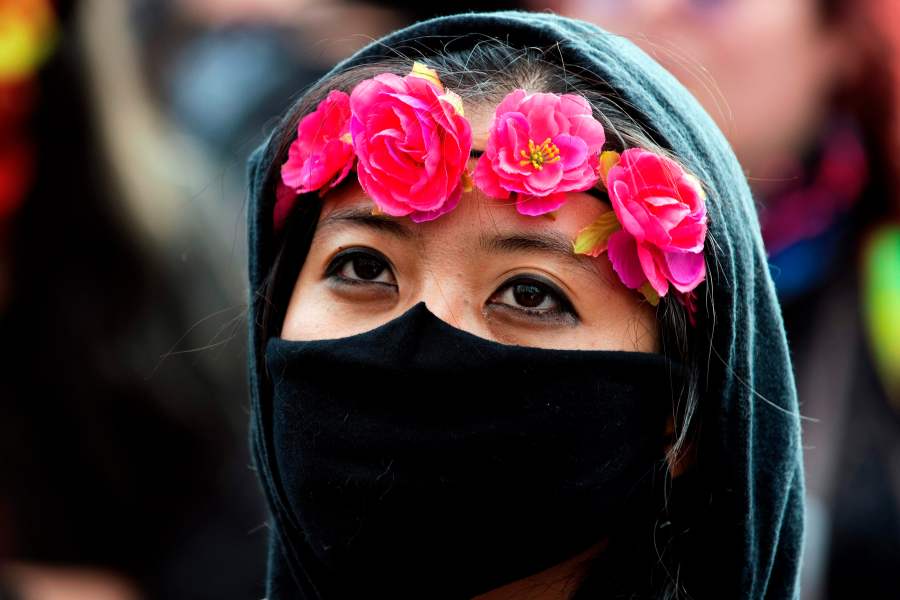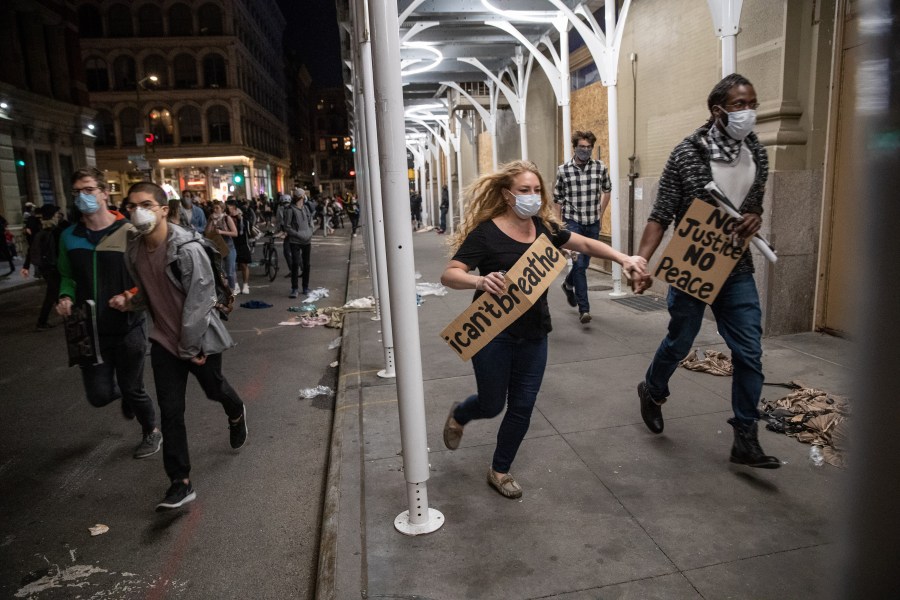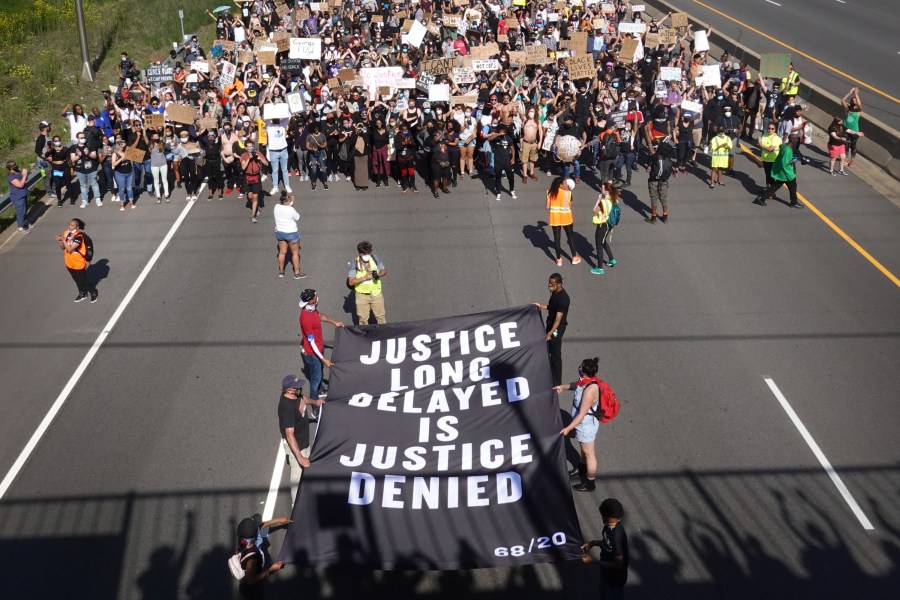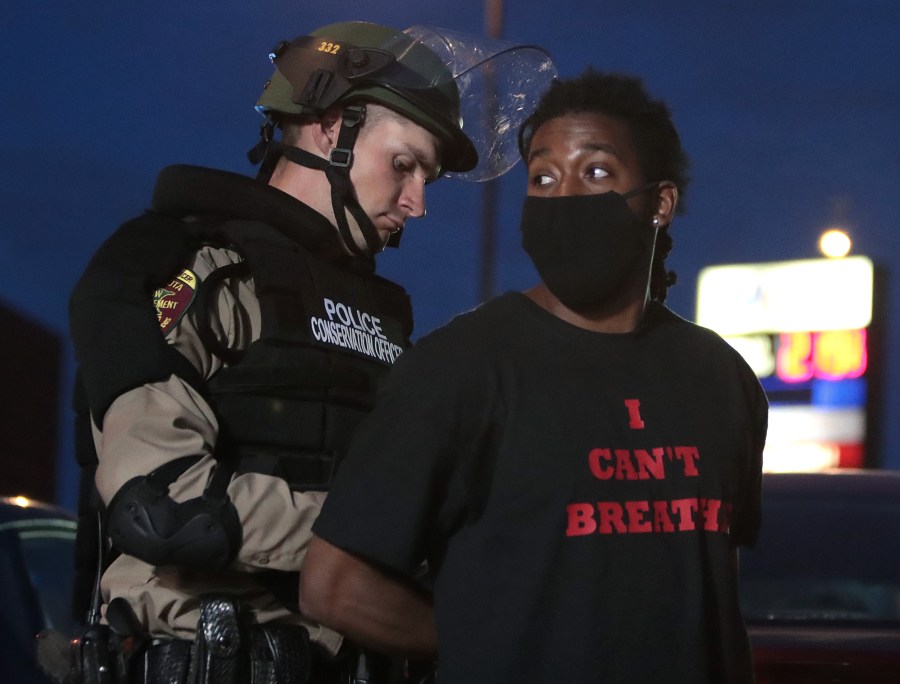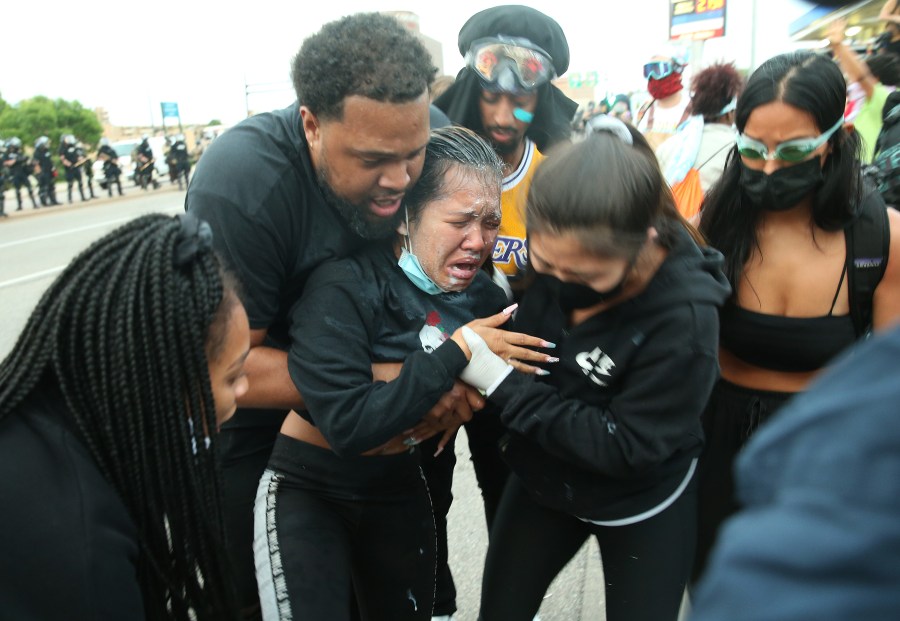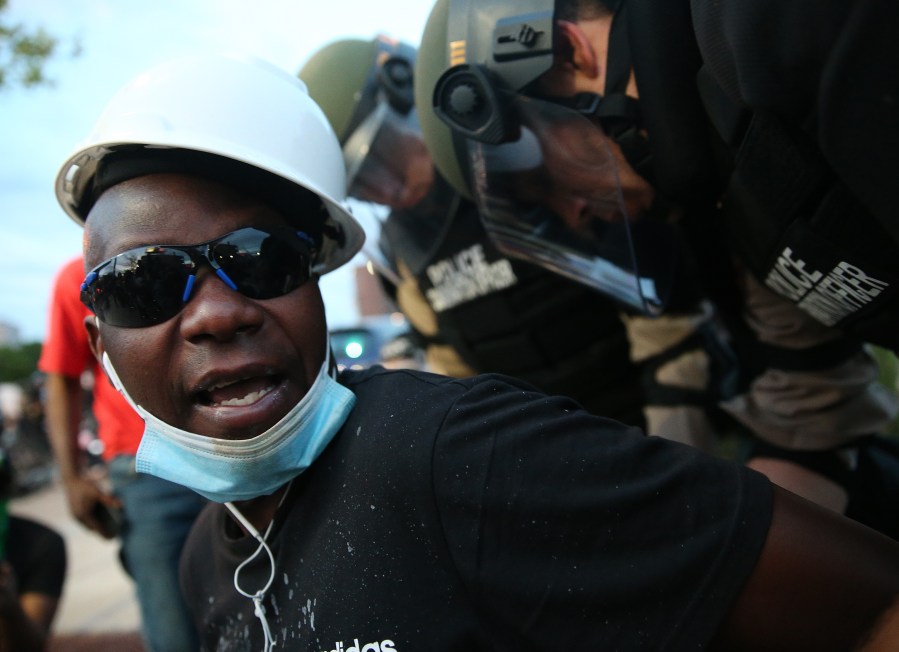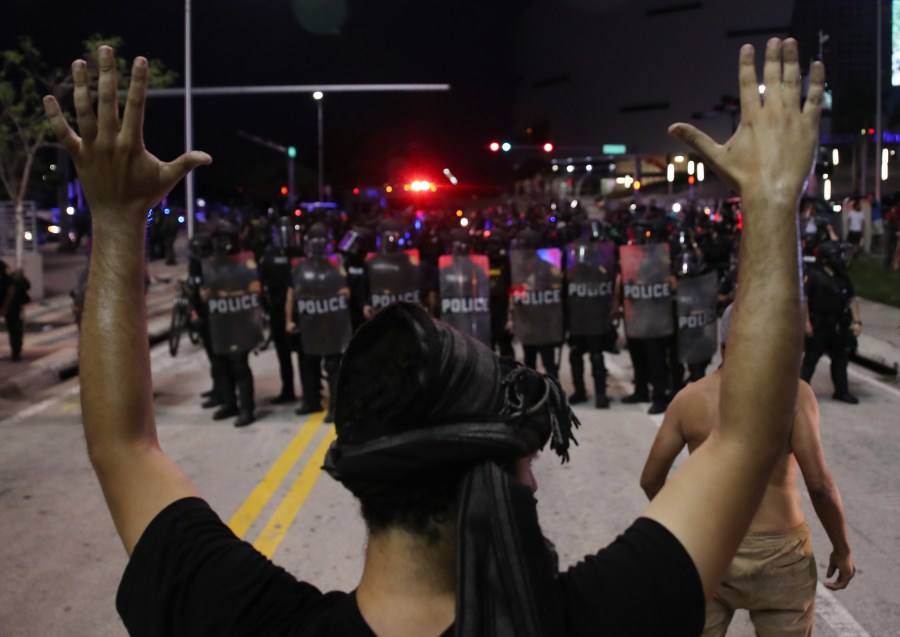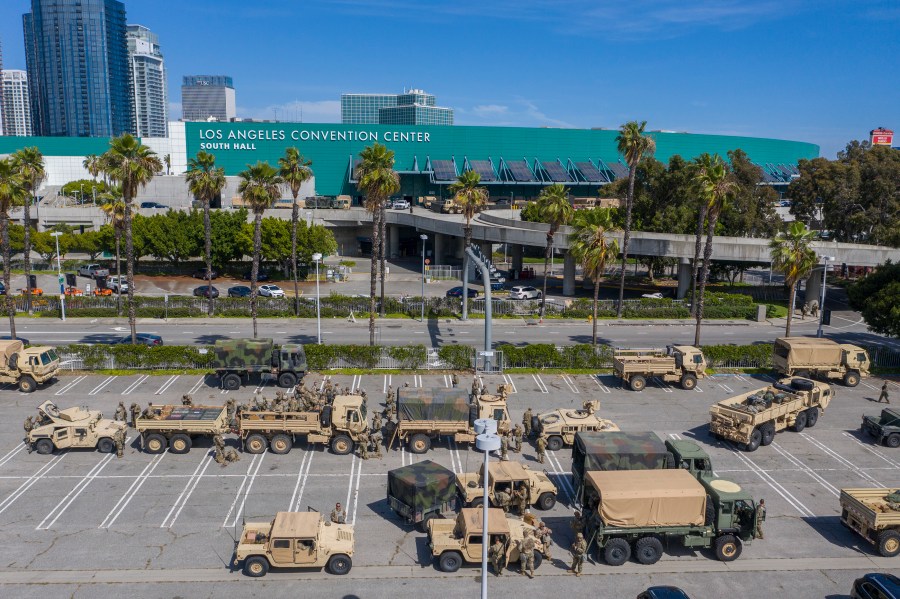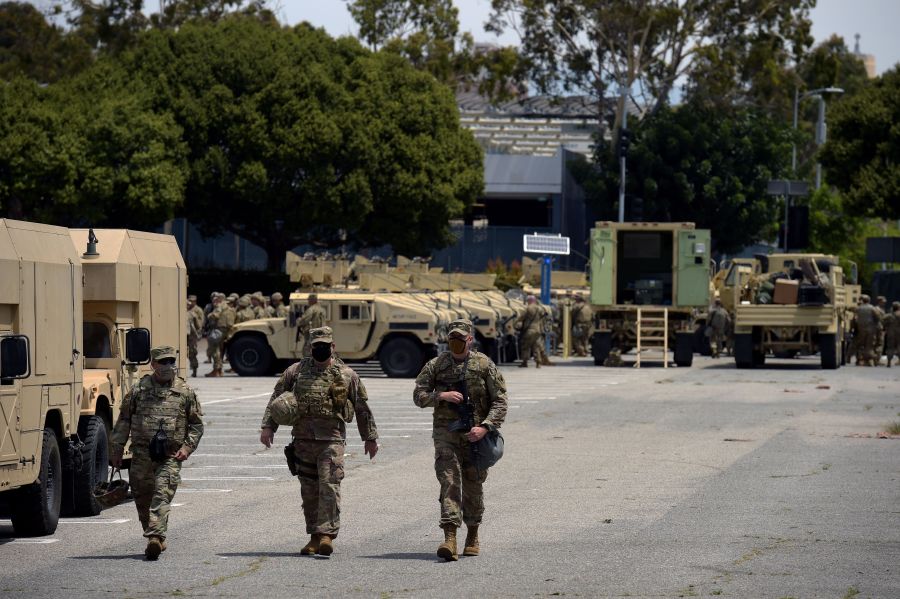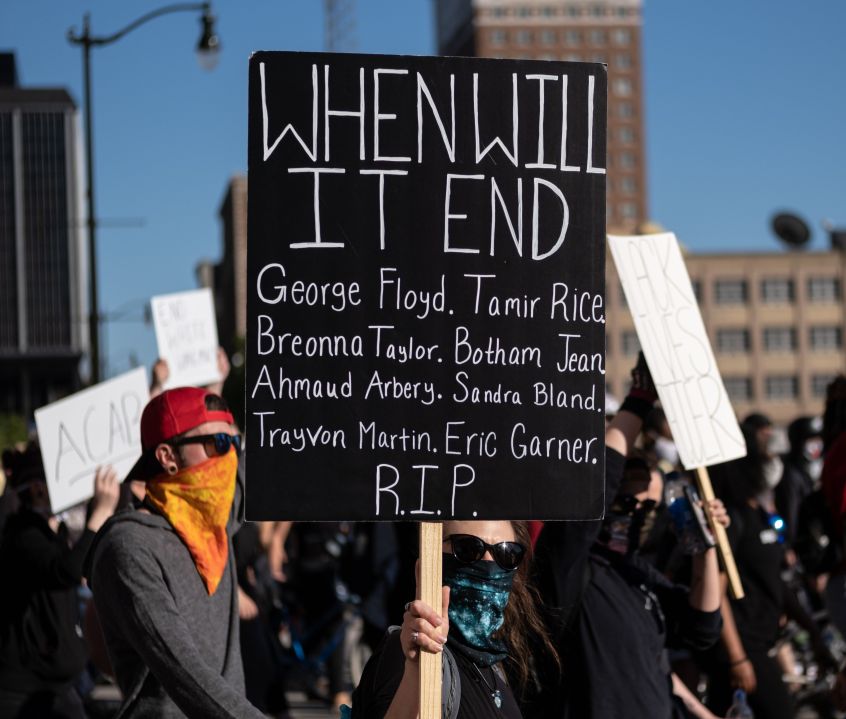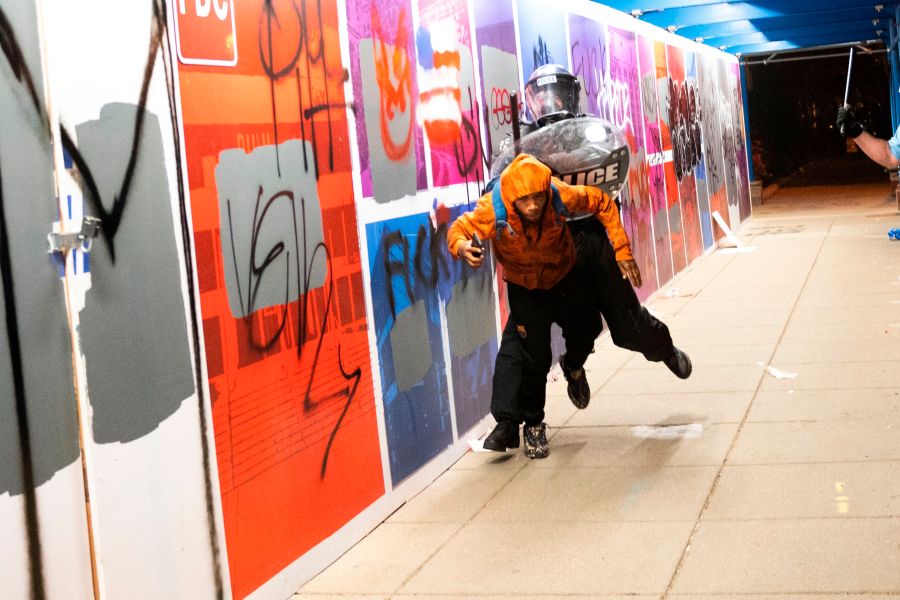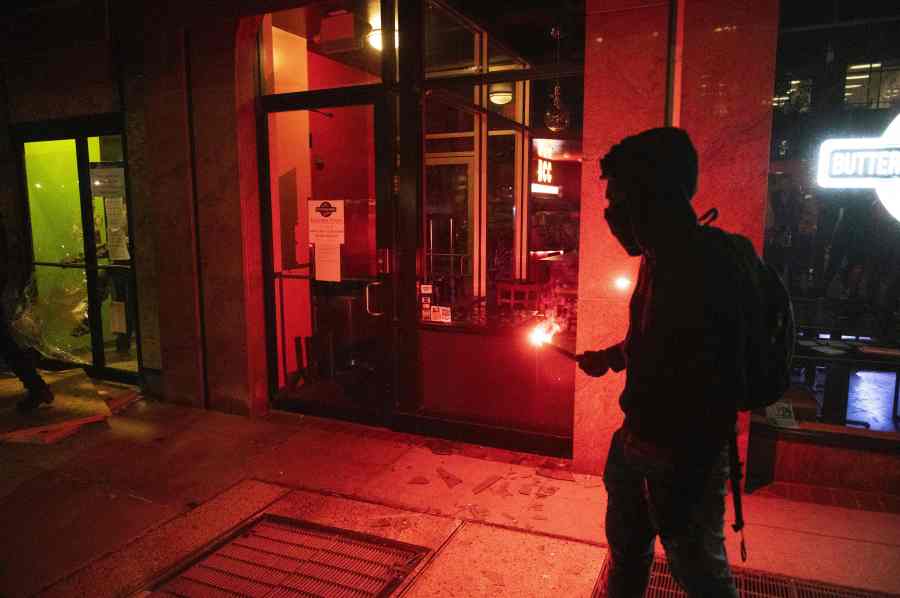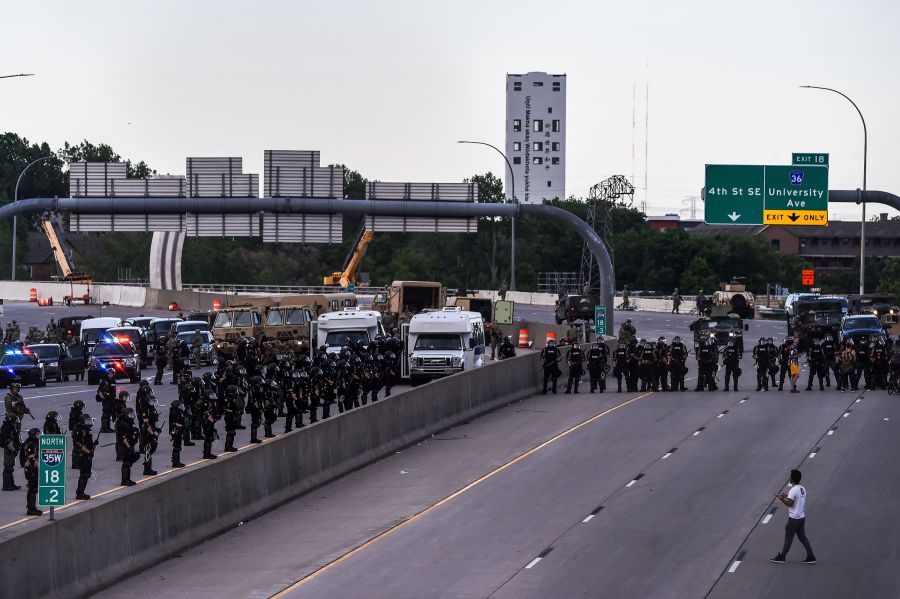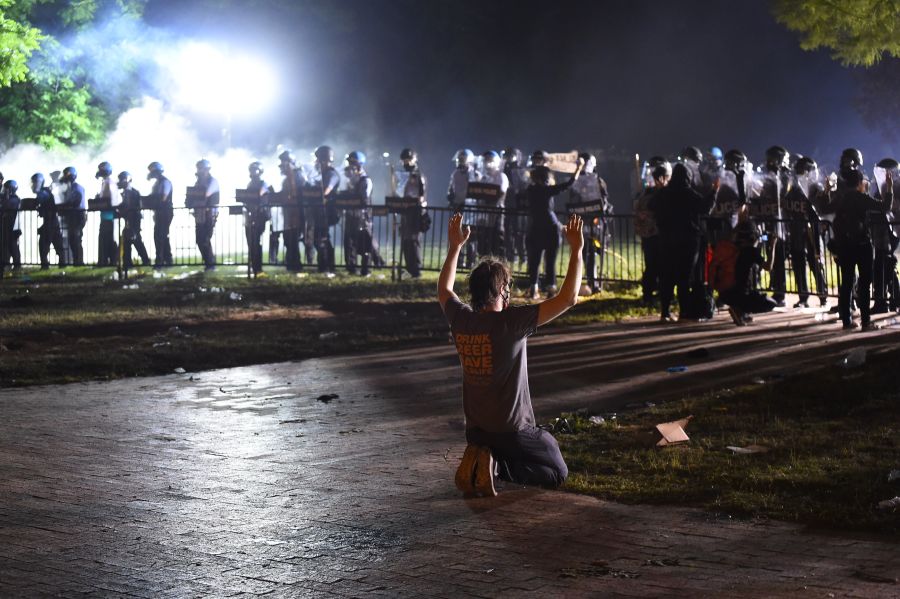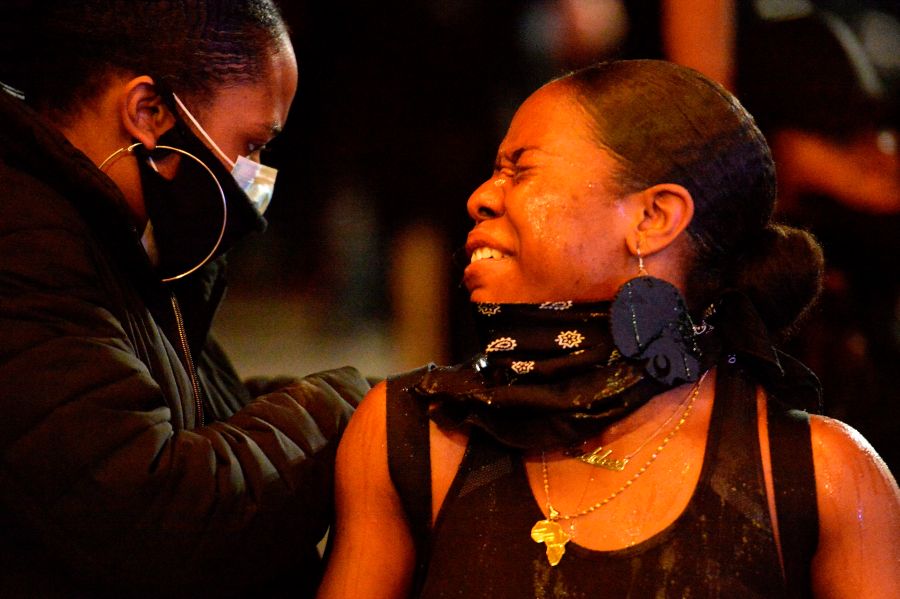WASHINGTON (AP) — With cities wounded by days of violent unrest, America headed into a new week with neighborhoods in shambles, urban streets on lockdown and shaken confidence about when leaders would find the answers to control the mayhem amid unrelenting raw emotion over police killings of black people.
All of it smashed into a nation already bludgeoned by a death toll from the coronavirus pandemic surging past 100,000 and unemployment that soared to levels not seen since the Great Depression.
Sunday capped a tumultuous weekend and month that saw city and state officials deploy thousands of National Guard soldiers, enact strict curfews and shut down mass transit systems. Even with those efforts, many demonstrations erupted into violence as protesters hurled rocks and Molotov cocktails at police in Philadelphia, set a fire near the White House and were hit with tear gas and pepper spray in Austin and several other cities. Seven Boston police officers were hospitalized.
In some cities, thieves smashed their way into stores and ran off with as much as they could carry, leaving shop owners, many of them just ramping up their business again after coronavirus pandemic lockdowns, to clean up their shattered storefronts.
In others, police tried to calm tensions by kneeling in solidarity with demonstrators, while still maintaining a strong presence for security.
The demonstrations were sparked by the death of George Floyd, a black man who pleaded for air as an officer pressed a knee into his neck. Floyd’s death in Minneapolis came after tensions had already flared after two white men were arrested in May for the February shooting death of black jogger Ahmaud Arbery in Georgia, and the Louisville police shooting death of Breonna Taylor in her home in March, which also attracted national attention in May.
“They keep killing our people. I’m so sick and tired of it,” said Mahira Louis, 15, who was at a Boston protest with her mother Sunday, leading chants of “George Floyd, say his name.”
Tensions rose Sunday outside the White House, the scene of three days of demonstrations, where police fired tear gas and stun grenades into a crowd of more than 1,000 chanting protesters across the street in Lafayette Park. The crowd ran, piling up road signs and plastic barriers to light a raging fire in a nearby street. Some pulled an American flag from a building and threw it into the blaze.
A building in the park with bathrooms and a maintenance office went up in flames. As demonstrations persisted past curfew, Washington police said they were responding to multiple fires set around the capital.
The district’s entire National Guard — roughly 1,700 soldiers — was called in to help control the protests, according to two Defense Department officials who insisted on anonymity because they were not authorized to publicly discuss the matter.
As the protests grew, President Donald Trump retweeted conservative commentator Buck Sexton who called for “overwhelming force” against violent demonstrators.
Former Vice President Joe Biden, the presumptive Democratic presidential nominee, visited the site of protests in his hometown of Wilmington, Delaware, and talked to some of the demonstrators. He also wrote a post on Medium expressing empathy for those despairing about Floyd’s killing.
At least 4,400 people have been arrested over days of protests, according to a tally compiled by The Associated Press. Arrests ranged from stealing and blocking highways to breaking curfew.
In Salt Lake City, an activist leader condemned the destruction of property but said broken buildings shouldn’t be mourned on the same level as black men like Floyd.
“Maybe this country will get the memo that we are sick of police murdering unarmed black men,” said Lex Scott, founder of Black Lives Matter Utah. “Maybe the next time a white police officer decides to pull the trigger, he will picture cities burning.”
Yet thousands still marched peacefully in Phoenix, Albuquerque and other cities, with some calling for an end to the fires, vandalism and theft, saying it weakened calls for justice and reform.
In downtown Atlanta, authorities fired tear gas to disperse hundreds of demonstrators. Mayor Keisha Lance Bottoms said t wo officers had been fired and three placed on desk duty after video showed police surrounding a car Saturday, and using stun guns on the man and woman inside.
In downtown Los Angeles, a police SUV accelerated into several protesters in a street, knocking two people to the ground. Nearby in Santa Monica, not far from a peaceful demonstration, groups broke into stores, walking out with boxes of shoes and folding chairs, among other items. A fire broke out at a restaurant across the street. About 30 miles (48 kilometers) south, scores swarmed into nearby outlet stores in Long Beach. Some hauled armloads of clothing from a Forever 21 store away in garbage bags, while a few stopped outside to change into stolen items.
In Minneapolis, the officer who pressed his knee onto Floyd’s neck has been charged with murder, but protesters are demanding the other three officers at the scene be prosecuted. All four were fired.
“We’re not done,” said Darnella Wade, an organizer for Black Lives Matter in neighboring St. Paul, where thousands gathered peacefully in front of the state Capitol. “They sent us the military, and we only asked them for arrests.”
Minnesota Gov. Tim Walz brought in thousands of National Guard soldiers on Saturday to help quell violence that had damaged or destroyed hundreds of buildings in Minneapolis over days of protests. That appeared to help minimize unrest both Saturday and Sunday.
Disgust over generations of racism in a country founded by slaveholders combined with a string of recent racially charged killings to stoke the anger. Adding to that was angst from months of lockdowns brought on by the coronavirus pandemic, which has disproportionately hurt communities of color, not only in terms of infections but in job losses and economic stress.
The droves of people congregating for demonstrations threatened to trigger new outbreaks, a fact overshadowed by the boiling tensions.
The scale of the coast-to-coast protests rivaled the historic demonstrations of the civil rights and Vietnam War eras.
Curfews were imposed in major cities around the U.S. About 5,000 National Guard soldiers and airmen were activated in 15 states and Washington, D.C.
In Indianapolis, two people were reported dead in bursts of downtown violence this weekend, adding to deaths reported in Detroit and Minneapolis.
In tweets Sunday, Trump blamed anarchists and the media for fueling violence. Attorney General William Barr pointed a finger at “far left extremist” groups. Police chiefs and politicians accused outsiders of causing the problems.
At the Minneapolis intersection where Floyd was killed, people gathered with brooms and flowers, saying it was important to protect what they called a “sacred space.”
Among those in Minneapolis was Michael Brown Sr., the father of Michael Brown, whose killing by a police officer in Ferguson, Missouri, set off unrest in 2014.
“I understand what this family is feeling. I understand what this community is feeling,” he said.
